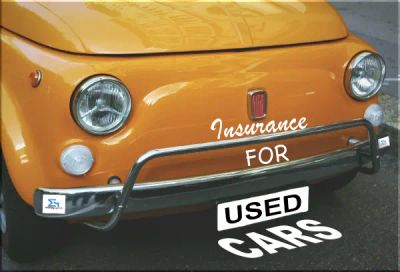Car insurance is mandated by law in most countries and it is no different in Singapore. When you buy a new car, you probably had the insurance pre-included or were asked to sign up for the ones popular at the car dealers. However, come renewal time, and one may wonder how much should you really pay for your car insurance? How is car insurance calculated? What factors impact your car insurance? And if the insurance premium is based on pre-determined factors, why does the quoted premium change from an insurer to an insurer?
We will have a detailed look at how car insurance is calculated in Singapore and discuss how should one go about comparing them.
Let us begin with the basics of what is an insurance policy and why it matters to the calculation of the quote.
What is an insurance policy?
For the very newbies amongst us, an insurance policy simply put is a contract between you and the insurer, where you provide the details of your car and your driving profile, based on which the insurer quotes you a certain premium, he or she is comfortable with to carry your risk.
Here- ‘risk’ is any damages that may arise because of you using this car, which potentially could be a large sum and hence you want someone else to cover it for you. If you end up damaging this car or hurting yourself or others while using this car, the insurer promises you to cover the damages in exchange for a fee or the premium.
However, as per an insurance contract, you must also agree to make sure you would not be lenient about the usage and would not cause any damage with deliberate intentions.
Simply put, an car insurance policy is a promise between two parties. A promise where one party agrees to pay the damages the other may occur in “unfortunate” incidents in exchange for a fee (premium) and the other party promises to make sure no damages would be done on purpose.
Now, since the insurer is promising you a cover, you are also obliged to tell the insurer everything about your car and your driving records truthfully. Hiding any of these details would be against the ethics of the policy. To be more technical, this could also void an insurance policy or may be considered as insurance fraud.
What is an underwriter?
Now, that we know what an insurance policy is, let us quickly brush aside what an underwriter is.
An underwriter in the context of any insurance company is simply the “insurer” who evaluates and writes the risk. At any given insurance company, you will find a group of individuals with “Underwriter” job titles, whose job is to evaluate various conditions and calculate the premiums of the risk.
An underwriter is responsible to evaluate the risk and quote the price. For example and hypothetically speaking, on one fine day, an underwriter named Joe may sit at his office desk and say, “Hmm, a driver who is single and below 20 years old, may drive, way faster than a married 35 years old who has more responsibilities in his life?. I think it is riskier to cover a 20-year-old than a 35-year-old driver. If I do need to underwrite a 20-year-old, I would increase the premium by an extra 5%. That would make sure, I do not incur more losses if the 20-year-old ever crashes his car?”.
On the other hand, another underwriter named “Johnny” may say, “No,No, No, No! The 20-year-old driver is way riskier. I may reject his proposal and will not underwrite him. The 20-year-old driver is outside my risk appetite”.
So, in short, the underwriters are the ones who study the markets and make rules of “calculating an insurance quote“. Every underwriter may write the rules differently based on their own risk appetite as well. For example, an underwriter who has a very large customer base can afford to risk an insurance policy for a lesser premium. This is an important factor to understand why insurances calculated by various companies for the same car may be different.
“To each his own- Every underwriter analyses the risk in his or her own way!”
So, how is car insurance really calculated? Well, most underwriters calculate the insurance based on the “risk” they are willing to undertake.
That being said, the car insurance calculator is based on various factors. Some of these factors can change from insurer to insurer (as we saw how different underwriters may write it differently), but the majority of the factors are common amongst insurers and are, as below.
Factors impacting your car insurance calculations.
- Make of the car: Every car manufacturer manufactures their car differently. Some may be aligned towards only manufacturing electric vehicles whereas others may be more aligned towards hybrids. Each of these manufactures may be further popular in a certain country. Getting parts to repair some manufactures products may be way easier and cost-efficient than others. To underwriters, this flags an important calculation point. Thus some manufacturers cars may be cheaper to insure whereas others will have to be quoted at an extra premium.
- Model of the car: Within the same manufacturer or the car, various models carry different risks. For example, a model ‘x’ of the car may carry an expensive 2.0-litre engine whereas the lower end model ‘z’ may carry a 1.0-litre engine. The model of the car may carry different risks to various insurers and thus results in a different insurance premium calculation factor.
- Year of manufacture or registration: The older the car, the higher the chances of it breaking down. Moreover, certain old parts may prove expensive to repair. As your car ages, the insurance premium tends to increase.
- Usage of the car: Usage of the car is usually a very important factor in the car insurance calculator. Some may drive their cars regularly for and to work or even during work. On the other hand, some may drive their car only for leisure. More is the use of the car, higher are the chances of accidents or breakdowns and thus higher are the chances of insurance claims. Insurers may charge higher premiums for a car that are used more than those who tend to be in the garages for most of the time.
- Off-Peak car vs Regular car: One of the strategies to control the number of cars on road implemented by the government is ‘off-peak’ or ‘red plate’ cars. Off-Peak cars tend to be used lesser compared to regular plate cars and thus may have lower insurance premium tagged on them. Read about off-peak or red plate car insurance.
- Driver’s location: The location or address of the driver may tell the insurer more about the expected usage of the car. Some insurers tend to use factors such as your postal code, parking space etc to determine your car usage. For example, a customer staying far from the CBD area and driving the car to and fro to work in the Central business district may have a higher premium than someone who stays and work within the CBD area.
- Driver’s occupation: Certain occupations of the driver may lead to higher usage of the car. For example, a driver who works in sales may drive around more meeting potential clients compared to an accountant who may just drive it to and fro to work. Thus certain insurers may consider occupation as a car insurance calculation factor.
- Policyholder’s Credit: Credit history may also be used by few insurers who want to be extra cautious while underwriting the premiums. Credit history may be statistically used to predict your potential to file a claim as well as the cost of the claim.
- Previous accident records and No claim discount: Previous accident records are a great way for insurers to understand your driving profile.NCD or No Claim discounts is a system used to discount the renewal premium for good drivers. With help of NCD, insurers can gauge your driving profile, claims history and thus apply discounts to your premium. NCD is a huge factor at play while calculating premium or even refusing to underwrite for very risky profiles.
- Certificate of merit: Singapore’s traffic police has initiated a good driver appraisal system known as certificate of merit which can be obtained via the e-services channel.. This certificate helps insurers assure about your good driving practices and thus lower your insurance premium.
- Driving experience: ‘Practice makes man perfect, is an age-old saying and is true for sure. The more one practices, the better one gets at a certain skill. Driving is no different in this case. An experienced driver has a good amount of practice and is way less likely to get into accidents than a new driver. Thus the length of driving experience is an amount factor considered while calculating the car insurance premium.
- Driver’s age: Per market data or underwriter research, newbie or young drivers have more risk of either driving fast than say someone who is older and has more responsibilities in life. Thus a drivers age may tell insurers about potential risks while underwriting for a car insurance premium.
- Driver’s gender and or marital status: Statistically, more women drivers are safe and slow drivers in Singapore than their male counterparts. Also, lessers fewer women are caught driving under influence of alcohol than men. Thus some insurers may consider gender as also a calculation factor for car insurance premiums. Also, people who are married are considered safe drivers for their responsibilities towards their spouses than single drivers.
- Number of other named drivers: More the number of other drivers, your car will be driven by and you add on the policy, the higher the risk for the insurers. Thus the number of drivers as well as the profile of other drivers will determine the price of the car insurance premium. Insurers also offer named drivers car insurance packages with ‘n’ number of drivers unto a certain age are included or even flexible packages where any number of drivers can be added.
- Excess agreed on the policy: Some car insurance policies allow customers to agree on an excess they will shell out in case of a claim. The higher the amount of excess one agrees to pay later, the lower may be the initial monthly payment. Read more about what is excess and how much excess should you pay.
- Any other extra optional benefits: Various other optional benefits one adds, will also further increase or decrease the risk and thus alter the insurance premium. For example, if you choose to repair your car at your own workshop, other than those designated by the insurer after an accident- the insurer may increase your premium to cover the extra costs.
The three main types of car insurance in Singapore
Now that we know how car insurance is calculated, let’s have a quick look at the basic three types of car insurance in Singapore. These basic three types are common amongst all insurers and the least cover amongst them is the minimally mandated by the government.
The three basic types of car insurance in Singapore are:
- Third-party only
- Third-party and fire and theft.
- Comprehensive car insurance.
Third-party only car insurance:
As the name suggests, this insurance is the bare minimum and will cover you for any costs that you may be obliged to pay out to a third party as a part of an accident. Your insurer will not cover any damages that may occur to your own vehicle. Third-party insurances are the bare minimum and are the least required by the government. Few insurers also may only offer the third party only or third-party fire and theft only cover to older cars.
Third-party and Fire and Theft:
This is the second category of insurance and includes third party cover with additional covers for damages arising due to fire or theft. TPFT or Third party fire and theft are slightly expensive compared to Third party only.
Comprehensive car insurance cover:
Comprehensive car insurance covers as the name suggests are comprehensive in nature and help your cover third party, fire, theft as well as any damages to your car. You may further also add few other optional benefits such as cover for any increased medical expenses, or say specific parts such as windshield etc. Every insurer offers comprehensive cover but the limits and the specific details of coverage may vary.
Now that we know the types of car insurance in Singapore, how should you go about comparing car insurances?
How to compare car insurance proposals?
With various options as well as insurers offering car insurances in Singapore, it could get overwhelming how would one go comparing them and choosing the best. Below are few pointers you could consider that may help you nitpick the best for you.
Decide on the basic car insurance types.
The first step towards deciding which car insurance to get is to decide on the basic type. The three basic types of car insurance being ‘Third-party only’, ‘Third-party and fire and theft’ or ‘Comprehensive’.
If your car is older than 10 or 15 years, there are high chances, most insurers will only offer Third-party or Third-party and fire and theft policies to you. In this case, you have no option other than to choose these covers or replace the car.
On the other hand, if you do foresee that you can be comfortable covering your own car’s damage expenses (if any), then you may only need policies that help you cover third parties and any medical expenses or death costs that may unfortunately occur.
In other cases, looking at comprehensive covers would be a better bet.
Compare the coverage and gauge your possible limits
The next step would be, to compare all the covers offered by various insurers. For example, one insurer might cover towing costs up to 400$ on their comprehensive policy whereas the other might cover up to 500$. Comparing these limits will tell you which one is a better deal.
We would also recommend being practical about these limits. For example, chances are you may never hit the upper limit offered by the insurer. In that case, would it be better to pay less and have a lower limit on the cover?
Check optional benefits that concern your usage.
Every insurer may offer various other benefits that are either prefaced with the quote or are an add on.
For example, if you would like to repair your car at your own workshop other than the insurer designated one, you may have to add that requirement as an extra optional benefit with certain insurers. That would add up to your total insurance premium.
By first adding all the options and benefits you need, and then comparing the various offers, we could make a better judgment on the best deal.
Check excess charged.
Excess is the extra amount you agree to shell out when you make a claim. Insurers may reduce their premium if you agree on a higher excess charge later. Comparing the excesses on various policies will also help you gauge the right deal.
Check for promotions/ offers
Most insurers in Singapore also run promotions to onboard customers throughout the year. There could be interesting deals during New Year, Chinese New Year, Hari Raya, National Day, 99 deals, 1010 deals,1111 deals, Christmas etc.
Check the below promotions pages on popular insurers’ websites to grab a good deal.
- FWD Insurance promotions.
- DirectAsia Insurance promotions.
- NTUC Income promotions.
Now that you have learnt the basic of car insurance calculator and comparison, do check out our detailed article on how to save on your insurance premiums.
If you find our work helpful, please do consider sharing the article with your friends and or someone who would benefit from this.



